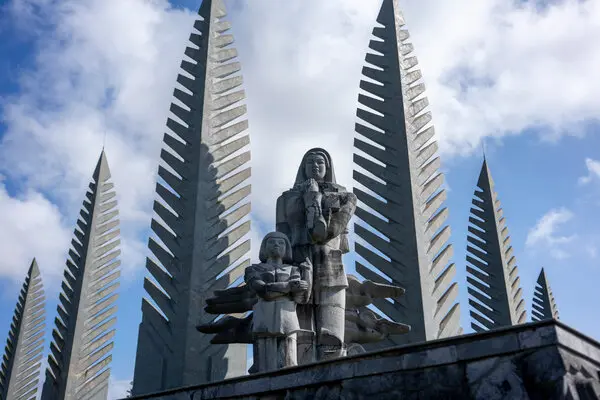By: Jy Hung Ong
The film “The Unburied Sounds of a Troubled Horizon,” created by Tuan Andrew Nguyen, focuses on a wooden bridge in Quang Tri Province, central Vietnam. This bridge connects the two warring sides of Vietnam: South Vietnam and North Vietnam. At the southern end of the bridge lies a postwar monument. However, the area is still covered with many unexploded shells. Tragically, anyone who decides to enter this area risks being blown apart.
“Unburied Sounds” is the center of “Tuan Andrew Nguyen: Radiance Remembrance,” an exhibit opening in Manhattan on June 29. This will be Tuan’s major solo museum exhibition. His last time with an art institution was six years ago, with the Propeller Group.
The Propeller Group was a Ho Chi Minh-based collective which was on the spotlight of the art world even when the trio was about to split apart. Journalist Frank Rose writes in an article for The New York Times, “The Propeller Group was known for the sly and artful commentary of such projects as ‘Television Commercial for Communism,’ a mock rebranding campaign that presented the New Communism as a slightly daffy lifestyle choice characterized by loose fitting clothes, sappy folk music, and smile after friendly smile.”
“Since the Propeller Group, a lot of my work has been about memory,” Tuan said in an interview with Ho Chi Minh City. “And how memory functions to help us deal with trauma. Intergenerational trauma.”
In 2021, the artist decided to fly north and join Project Renew, a group that aims to disarm bombshells. The first thing he noticed “is that you will hear bombs exploding in the distance every few hours” — controlled explosions by Project Renew. The second thing he noticed was that everything — flowerpots, planters — was constructed from bombshells. It was the only resource Quang Tri had.
“Unburied Sounds” tells the story of a woman named Nguyet, who scavenges for metal from unexploded bombs. Nguyet’s mother is scarred by the death of her husband, also a scavenger. One of Nguyet’s friends, Lai, played around with cluster bombs when he was ten and ended up with one eye and stumps where two legs and an arm used to be. Two of Nguyet’s cousins died in the explosion.
“Death and dismemberment are constant companions in this place,” Frank Rose writes in his article for the New York Times.











